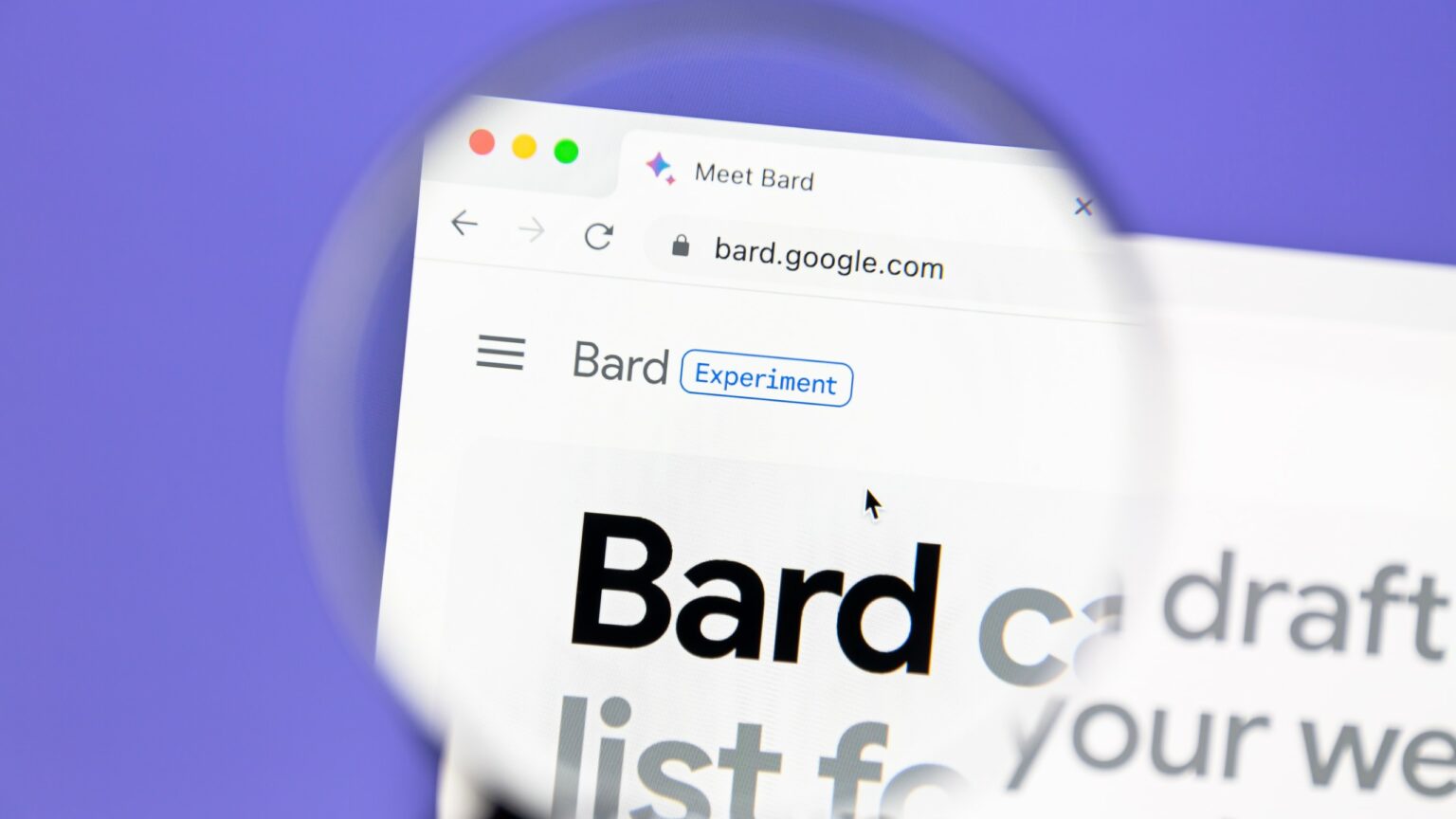Google announced new features for its AI chatbot Bard, including the ability for Bard to provide answers via audio and respond to image prompts. The chatbot is also expanding to Europe and Brazil.
In a blog post on Thursday, Google senior product director Jack Krawczyk said Bard is now available in more than 40 languages, including Arabic, Chinese, German, Hindi, and Spanish. Google’s new updates are available immediately.
The audio feature uses Google’s text-to-speech technology, allowing the chatbot to generate natural-sounding speech. Instead of just reading text, people can ask Bard a question and it will respond by speaking the answer out loud.
Also read: Lightning Labs Enables Bitcoin Payments for AI Like ChatGPT
Bard changing its responses
Bard’s new features, which apply worldwide, allow users to customize their interactions with the AI. People can now choose the tone and style of Bard’s responses, as well as pin or rename conversations, export code to more places, and use images in prompts.
With the visual feature, users can show Bard a picture, and it will create text that is relevant to the image. Krawczyk said the update gives users more control over their experience with Bard and makes it easier to use the AI for a variety of purposes.
“Sometimes hearing something out loud can help you approach your idea in a different way – This is especially helpful if you want to hear the correct pronunciation of a word or listen to a poem or script,” he said.
You can now access Bard in new languages and countries, customize responses, add images to your prompts and more. Learn more ↓ https://t.co/k0s7wshyMT
— Google (@Google) July 13, 2023
In addition to the new features, Google said Bard is expanding its global reach to Europe and Brazil, as it steps up its rivalry with OpenAI’s ChatGPT. The tech company said the chatbot is now available in “most of the world…in the most widely spoken languages.”
Bard was not launched in the European Union because the main data regulator in the bloc, the Irish Data Protection Commission (DPC), had concerns about privacy. The DPC said that Google did not provide enough information about how Bard protects user privacy.
According Krawczyk, the company has since met with the regulator to reassure them about the privacy measures in place for Bard.
Bold experiment
Bard vice president of engineering Amar Subramany said that people could opt out of their data being collected, Reuters reported. However, he refused to comment on whether there were plans to develop a Bard app.
“Bard is an experiment. We want to be bold and responsible,” Subramany told journalists at a press briefing.
The artificial intelligence industry has seen a wave of big money investment over the last six months, spurred by the runaway success of ChatGPT. The investments are coming despite concerns about the dangers of AI, including a threat to humanity that is equal to nuclear war.
As MetaNews reports, Elon Musk just launched his AI start-up xAI, built by a team of former Google and OpenAI engineers. The billionaire previously cautioned against the development of AI, calling for a pause and tougher regulation for the nascent industry.
Another ChatGPT rival, Claude 2 from American AI company Anthropic, went live earlier this week. The chatbot is able to summarize large volumes of text, such as an entire novel.
Anthropic said Claude 2 is publicly available in the U.S. and the U.K. too. The chatbot uses a safety method described by the company as “Constitutional AI”, in reference “to a set of principles to make judgements about the text it is producing.”
Despite rapid development public interest in generative AI conversational tools is waning. Data shows that ChatGPT website traffic declined nearly 10% in June. It is the first time that traffic dropped since the launch of ChatGPT in November.









 and then
and then